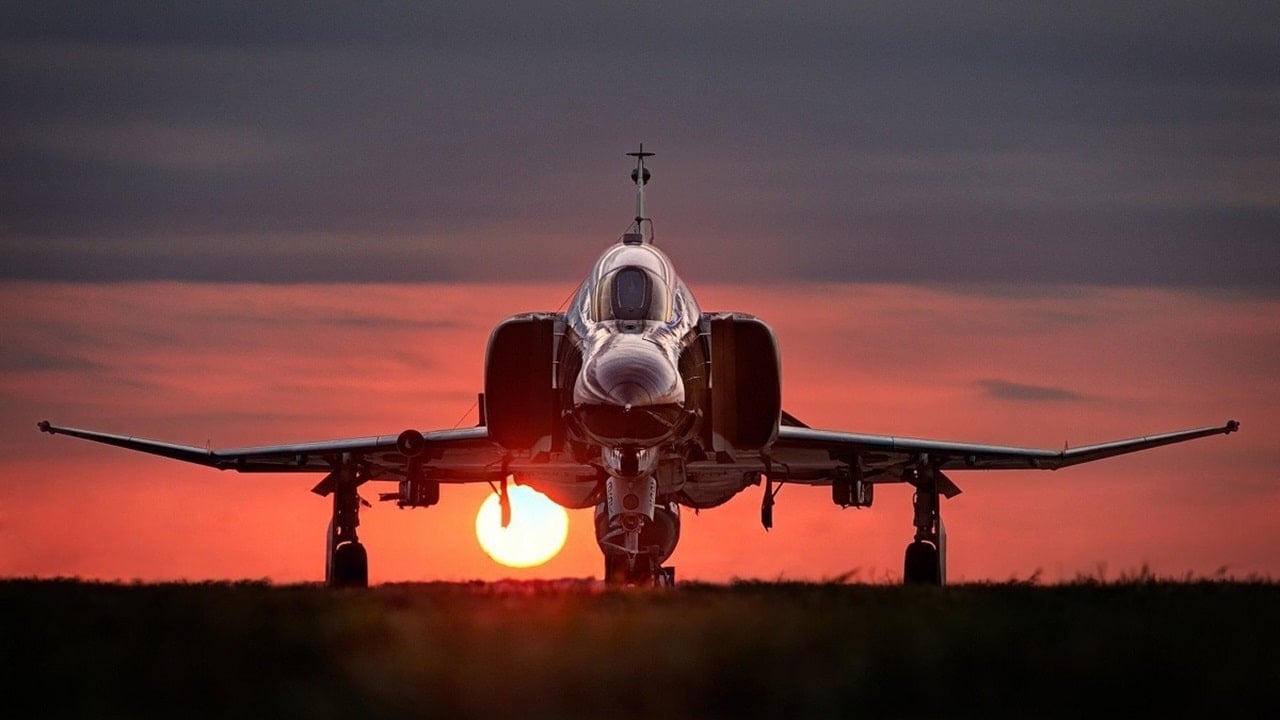The F-4 Phantom II, birthed from the visionary minds at McDonnell Aircraft in the 1950s, stands as an enduring testament to innovation and adaptability. Initially conceived as an attack aircraft, the Phantom underwent a remarkable transformation into an all-weather interceptor, devoid of guns but armed with advanced radar and missile capabilities.
In a mere thirty-one months since its maiden flight, the F-4 Phantom II earned its stripes as the United States Navy’s fastest, highest-flying, and longest-range fighter, a distinction achieved in 1961. Its versatility didn’t go unnoticed, leading to its adoption by the United States Marine Corps and the United States Air Force. This tandem two-seat, twin-engine marvel became a linchpin during the Cold War, adeptly serving as a supersonic jet interceptor and fighter-bomber.

Armed to the teeth, the Phantom could carry over 18,000 pounds of weaponry on its nine external hardpoints, showcasing its prowess in air-to-air and air-to-ground missions. The addition of the M61 Vulcan rotary cannon enhanced its firepower, while the Westinghouse APQ-72 radar and an IR detector solidified its technological edge.
The F-4 Phantom II earned a slew of nicknames, from the affectionate “Spook” to the more utilitarian “Flying Brick” and “Double Ugly.” However, it officially became the Phantom II in 1959, shedding the “II” over time to stand alone as the F-4, the sole Phantom in the aircraft’s lineage.
Speed was the Phantom’s forte, reaching an impressive Mach 2.2 – twice the speed of sound. This speed demon set sixteen records for altitude, speed, and time-to-climb, etching its name in aviation history. Its prowess was further underscored by being the only aircraft flown by both the Navy Blue Angels and the Air Force Thunderbirds from 1969 to 1973.
The F-4 Phantom II etched its combat legacy in the annals of the Vietnam War, engaging in air-to-air missions and ground attacks. Its air-to-ground capabilities were so potent that it could carry twice the load of a WWII B-17 in its ground-attack role. The Phantom continued its service through the Cold War and played a crucial role in Operation Desert Storm before bowing out of the U.S. military’s active roster in 1996.
Manufactured between 1958 and 1981, the F-4 Phantom II left an indelible mark as the most produced American supersonic military aircraft, with 5,068 built by McDonnell Douglas and an additional 127 by Mitsubishi in Japan. Its influence extended globally, with nearly a dozen countries, including Australia, Germany, Israel, and the UK, incorporating the Phantom into their military fleets.

Powered by two General Electric J79-GE-17 jet engines, the F-4 Phantom II boasted a maximum speed of 1,485mph and a range of 1,750 miles. Equipped with nine external hardpoints, it could carry an impressive payload, supporting a range of missions from air superiority to reconnaissance.
Retired in 1996, the Phantom found a new role as aerial targets, designated QF-4, providing invaluable testing opportunities for the next generation of aviators. Boeing, the successor to McDonnell Douglas, oversaw the modified Phantoms serving as remotely controlled targets in 2014, marking the aircraft’s enduring contribution to military advancements.
As we reflect on the illustrious career of the F-4 Phantom II, its multifaceted roles, and the global impact it had, it remains an iconic symbol of aviation excellence. The legacy of the Phantom lives on, not only in its record-breaking feats but in the skies it once dominated and the stories it created.
